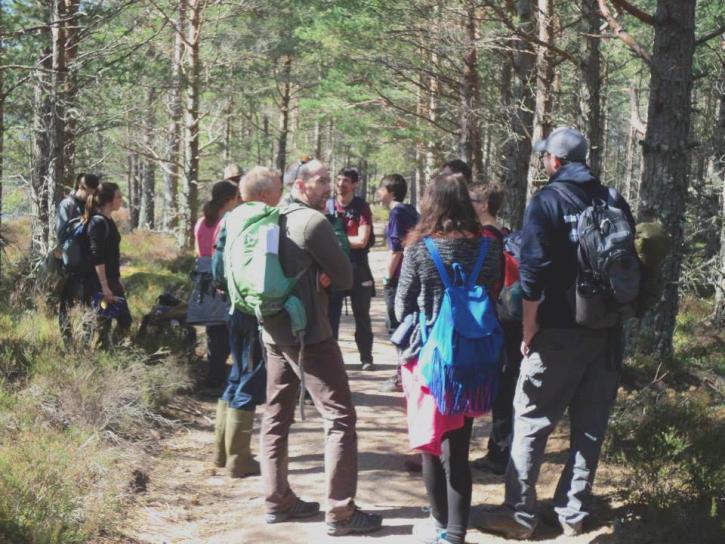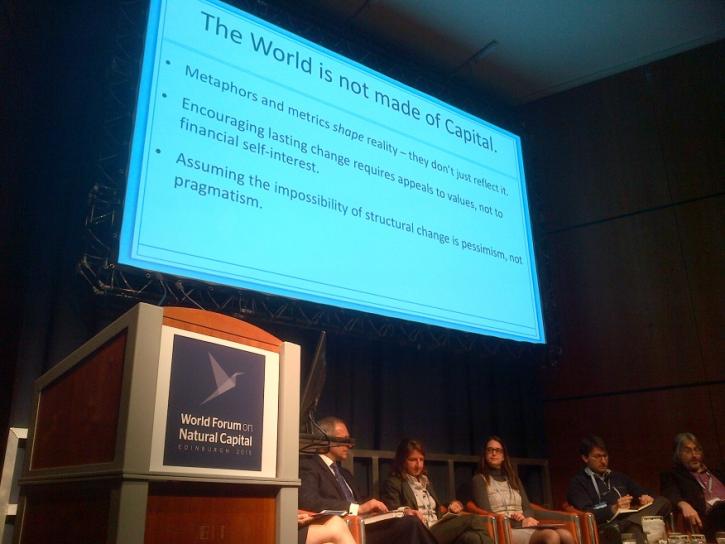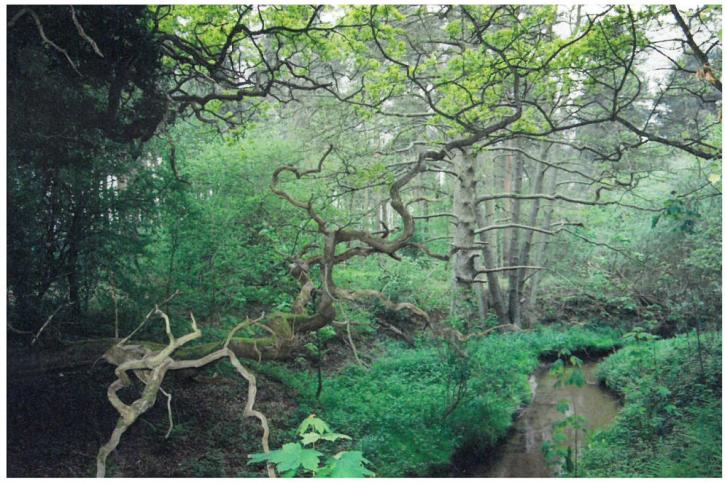Can Ecosystem Services & Natural Capital save the planet?
Posted by Scott Herrett on Friday 20 January 2017
Before life as a research assistant in SEGS I had 15-year career in construction, when during the credit crunch a boss once said to me “you’re more interested in saving the planet than making a few quid”. The comment was partly made in jest after I had spent a ‘few quid’ on some bird feeders for the site I managed. This made me think about how the industry supports the environment via voluntary environmental measures. These measures look good on “sustainability assessments”, but when profit margins are thin or non-existent, companies can ill-afford to think about the bigger picture and make decisions voluntarily to reduce their environmental impact.

Construction industry - Very little time and money to consider wider environmental impacts
Photograph by Scott Herrett 2006
Partially because of frustration with this situation, I left construction and headed to Edinburgh to study for an MSc in Ecosystem Services (ES).This concept, along with Natural Capital (NC) appealed to my values and problem solving mind-set developed during my time as an engineer. I was excited to learn about how these concepts offer pragmatic solutions to contests between nature and development. They can act as a metaphor to describe how the biosphere provides benefits to support human survival and well-being, and so are intended to enable decision-makers give more weight to protecting nature. It was a privilege to spend two years reading and thinking about these ideas. I recently heard them discussed by Robert Costanza, a leading figure in ecological economics, at the 2016 Macaulay Lecture. However, the more I learn the more doubts I have on whether these concepts can really pave the way to a sustainable future.
The first doubts arose during my MSc. This was interdisciplinary, so we considered both the ecological and social science challenges. I noted three types of problems. Firstly, with Natural Capital there are serious methodological challenges of attempting to reduce and quantify dynamic and unwieldy natural systems into stocks or assets, from which ecosystem services are produced. Secondly, ethical dilemmas persist within the process of assigning monetary values to ES benefits. Lastly, the concepts can reinforce an impoverished relationship with nature as fundamentally being separate and one which is only to serve humans, disregarding our actual entangled and fundamental place within nature.

Learning about the complexity of the forest ecosystem at Rothiemurchus – MSc Ecosystem Services field trip 2015
Photograph by Margaux Thomas 2015
Many of those working with or promoting these concepts acknowledge the challenges and risks, but have said that the concepts are simply a way to ‘illuminate the value of nature’ and they don’t necessarily intend for nature to be ‘commodified’, priced or traded. However, when nature is discussed in these terms, associations with money and commodities seem inevitable.
For example, last year I once heard a compelling talk about how NC could be used to promote biodiversity and help land managers make better decisions in Scotland. There was no mention of direct financial returns, but the first question asked by a smartly dressed gentleman in the audience was how natural capital could be used to increase his personal pension fund. Perhaps it was simple misunderstanding but I felt it hinted at something profound - instead of using these concepts to promote consideration of nature, it seems increasingly likely attempts will be made to use nature to create and support existing markets and deliver private and commercial benefit.
One of my concerns is about who or what benefits from these concepts. This was reinforced by the launch of the Coalition for Private Investment in Conservation at the recent IUCN World Congress in Hawaii. Their key aim is to ‘create new opportunities for return-seeking private investment in conservation’ and to ‘develop projects that seek to produce financial as well as environmental returns’. It’s still unclear what this will actually mean on the ground, but it raises important questions; will we only conserve what is profitable? This strikes me as a departure away from using ES & NC as tools to simply communicate our dependency on nature.

A debate on the ethical considerations at the World Forum on Natural Capital 2015
Photograph by Scott Herrett 2015
The advocates often state that global biodiversity continues to decline in the face of existing conservation, so we must do something new. This view maybe right, but only focusing on ES & NC conceals arguably more potent drivers of decline, such as our fundamental economic structure. In the short term I worry that focusing on private investment may divert energy away from developing polices, regulations and innovative approaches to effectively safeguard nature.
I can demonstrate this by coming back to my own experience in the construction industry. The single biggest change in reducing construction’s impact on the environment was not from a voluntary eco-accreditation scheme, such as BREEAM or ISO140001, but from fiscal policy. The introduction of the UK Land Fill Tax in 1996, and later the Land Fill Tax Escalator transformed overnight the way projects were planned and run and dramatically reduced waste going off site. Such precedents demonstrate how to create timely and real change through our democratic institutions.
For now, the concepts are very much in vogue, especially here in Scotland. I have colleagues who have been developing the use of ES and NC (contact Kirsty Blackstock or Kerry Waylen for more information). I’m also part of a research team using the concepts to better understand the many ways humans gain benefits, so to improve environmental governance. I’m sure we can offer ideas to tackle some of the challenges but remain mindful of the concept’s potential limitations. But for the longer term, I think we must keep a focus on discovering better ways to communicate our fundamental place within nature to all sectors of society.

"We abuse land because we regard it as a commodity belonging to us. When we see land as a community to which we all belong, we begin to use it with respect and love." Aldo Leopold
Photograph by Scott Herrett
A selection of reading from the MSc
Kallis, G., Gómez-Baggethun, E., & Zografos, C. (2013). To value or not to value? That is not the question. Ecological Economics, 94, 97–105.
Kosoy, N., & Corbera, E. (2010). Payments for ecosystem services as commodity fetishism. Ecological Economics, 69(6), 1228–1236.
Norgaard, R. B. (2010). Ecosystem services: From eye-opening metaphor to complexity blinder. Ecological Economics, 69(6), 1219–1227.
Gómez-Baggethun, E., de Groot, R., Lomas, P. L. & Montes, C. (2010) The history of ecosystem services in economic theory and practice: From early notions to markets and payment schemes. Ecol. Econ. 69, 1209–1218.
Kull, C. A., De Sartre, X, A., Castro-Larranaga, M,. (2015). The political ecology of ecosystem services. Geoforum. 61 122 - 134.
An alternative 'Natural Capital Accounting Project'...






Comments
Post new comment